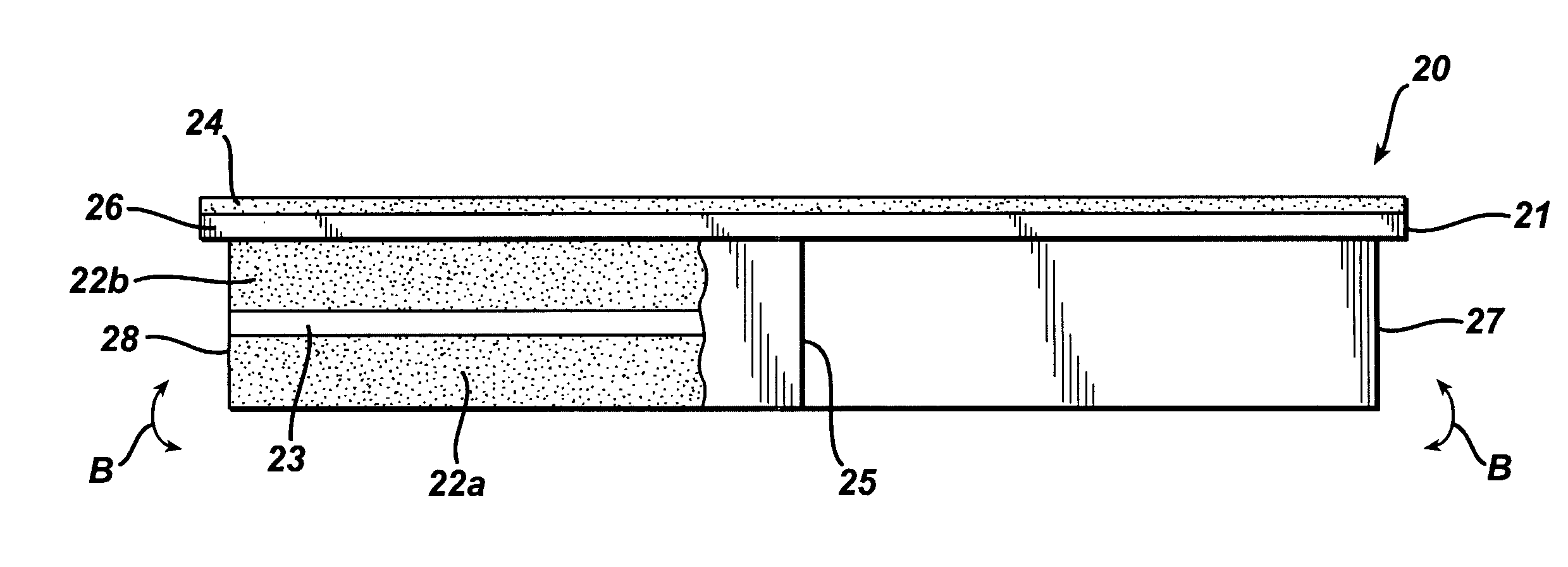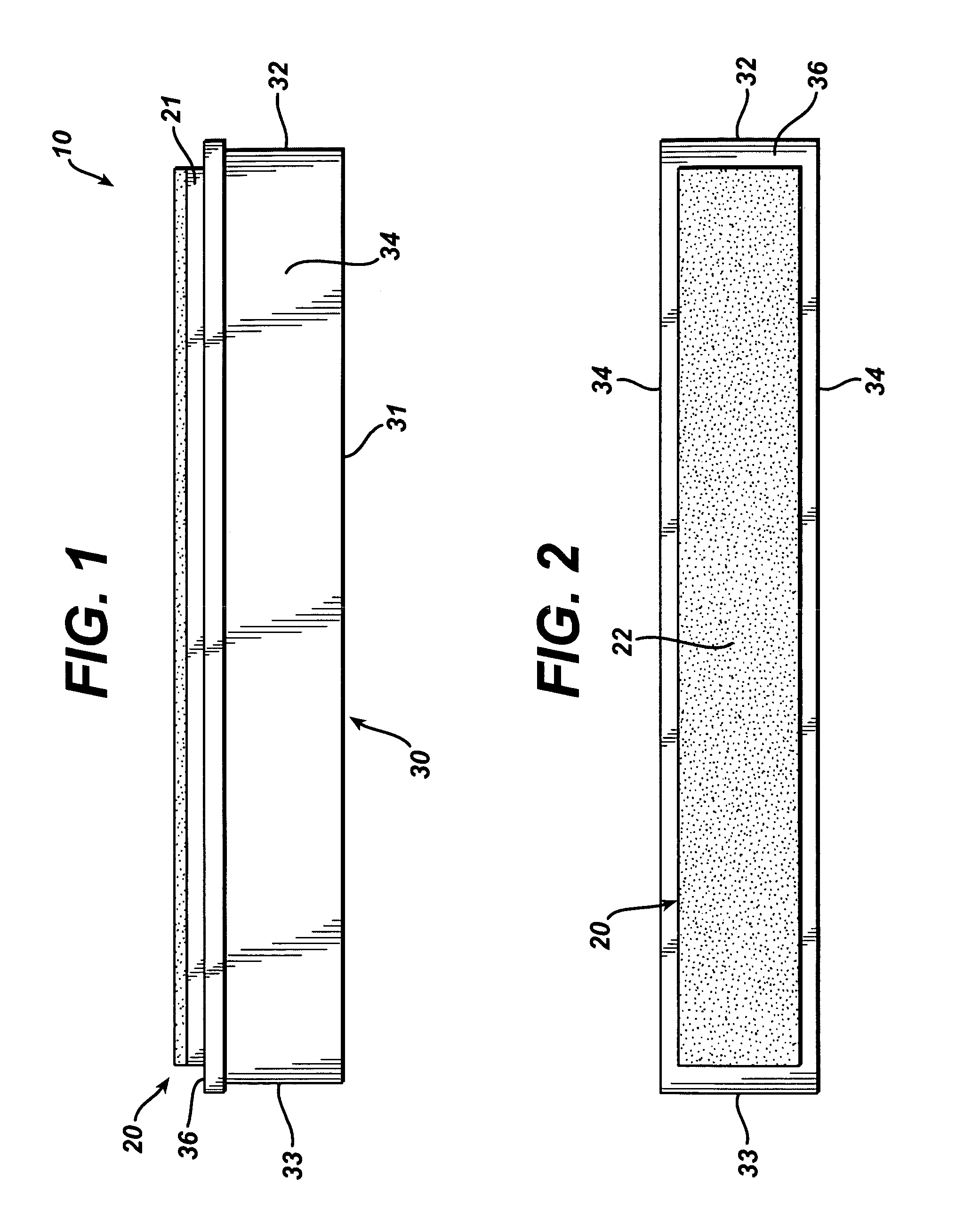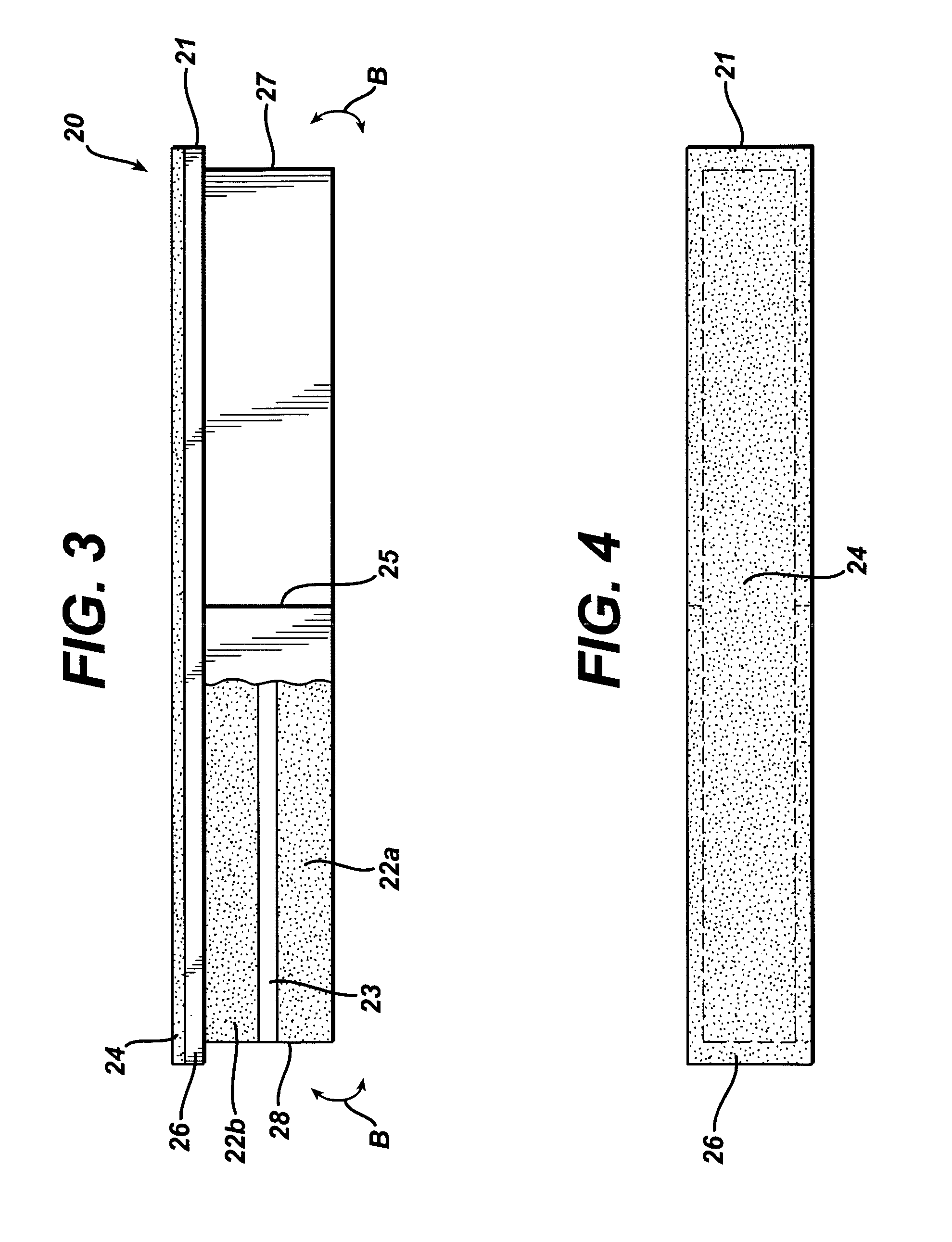Training model for endoscopic vessel harvesting
a training model and endoscope technology, applied in the field of training models for endoscope vessel harvesting, can solve the problems of prior art models or procedures performed on animals or on cadavers that do not accurately reflect clinical conditions, and models that do not provide realistic training for dissection of veins from surrounding tissue using endoscopic tools
- Summary
- Abstract
- Description
- Claims
- Application Information
AI Technical Summary
Benefits of technology
Problems solved by technology
Method used
Image
Examples
Embodiment Construction
[0019]Referring to FIGS. 1 and 2, the model, shown generally as reference numeral 10, includes a reusable base 30 and a replaceable single use insert 20. Base 30 includes a bottom 31, and a front wall 32, a back wall 33, and two side walls 34 extending upwardly therefrom. Base 30 also includes an upper surface 36, which extends from bottom wall 31, front wall 32 and side walls 34 around the perimeter of base 30. Base 30 is size and configured to receive insert 20.
[0020]Referring to FIGS. 3 and 4, insert 20 includes a tray 21, a tissue material 22 disposed within the space defined by tray 21, and a vein casting 23 disposed within tissue material 22. Tray 21 may also include a lip 26 that extends around the outer perimeter of tray 21, and a first end 27 and a second end 28. Tray 21 is sized and configured to be received within base 30 as is shown in FIG. 1. Preferably, lip 26 rests on upper surface 36 of base 30 when tray 20 is nested within the interior defined by the walls of base 3...
PUM
 Login to View More
Login to View More Abstract
Description
Claims
Application Information
 Login to View More
Login to View More - R&D
- Intellectual Property
- Life Sciences
- Materials
- Tech Scout
- Unparalleled Data Quality
- Higher Quality Content
- 60% Fewer Hallucinations
Browse by: Latest US Patents, China's latest patents, Technical Efficacy Thesaurus, Application Domain, Technology Topic, Popular Technical Reports.
© 2025 PatSnap. All rights reserved.Legal|Privacy policy|Modern Slavery Act Transparency Statement|Sitemap|About US| Contact US: help@patsnap.com



